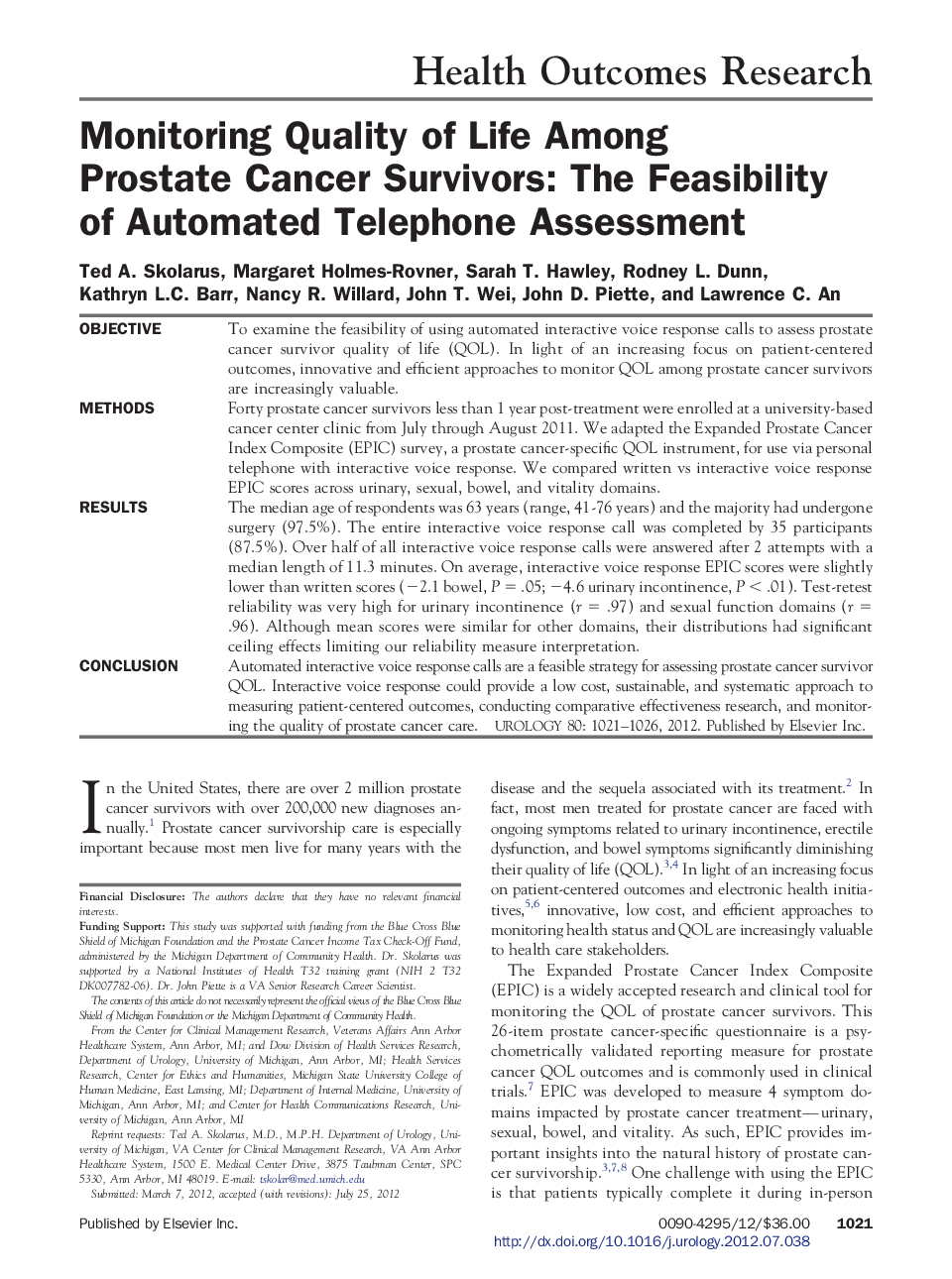| کد مقاله | کد نشریه | سال انتشار | مقاله انگلیسی | نسخه تمام متن |
|---|---|---|---|---|
| 6168200 | 1250338 | 2012 | 6 صفحه PDF | دانلود رایگان |

ObjectiveTo examine the feasibility of using automated interactive voice response calls to assess prostate cancer survivor quality of life (QOL). In light of an increasing focus on patient-centered outcomes, innovative and efficient approaches to monitor QOL among prostate cancer survivors are increasingly valuable.MethodsForty prostate cancer survivors less than 1 year post-treatment were enrolled at a university-based cancer center clinic from July through August 2011. We adapted the Expanded Prostate Cancer Index Composite (EPIC) survey, a prostate cancer-specific QOL instrument, for use via personal telephone with interactive voice response. We compared written vs interactive voice response EPIC scores across urinary, sexual, bowel, and vitality domains.ResultsThe median age of respondents was 63 years (range, 41-76 years) and the majority had undergone surgery (97.5%). The entire interactive voice response call was completed by 35 participants (87.5%). Over half of all interactive voice response calls were answered after 2 attempts with a median length of 11.3 minutes. On average, interactive voice response EPIC scores were slightly lower than written scores (â2.1 bowel, P = .05; â4.6 urinary incontinence, P < .01). Test-retest reliability was very high for urinary incontinence (r = .97) and sexual function domains (r = .96). Although mean scores were similar for other domains, their distributions had significant ceiling effects limiting our reliability measure interpretation.ConclusionAutomated interactive voice response calls are a feasible strategy for assessing prostate cancer survivor QOL. Interactive voice response could provide a low cost, sustainable, and systematic approach to measuring patient-centered outcomes, conducting comparative effectiveness research, and monitoring the quality of prostate cancer care.
Journal: Urology - Volume 80, Issue 5, November 2012, Pages 1021-1026